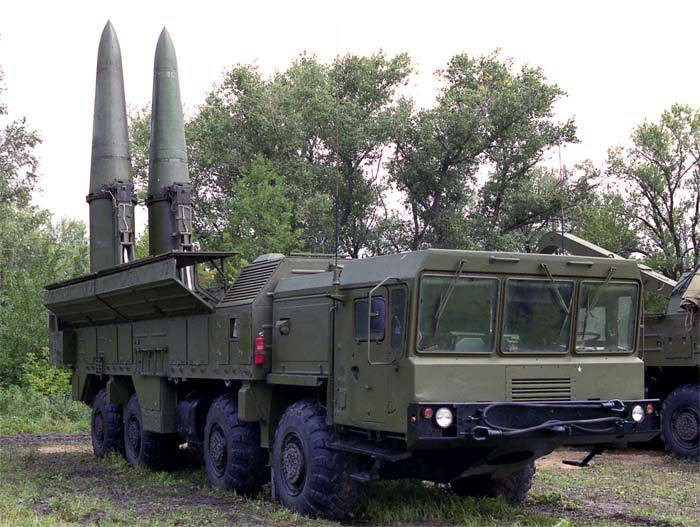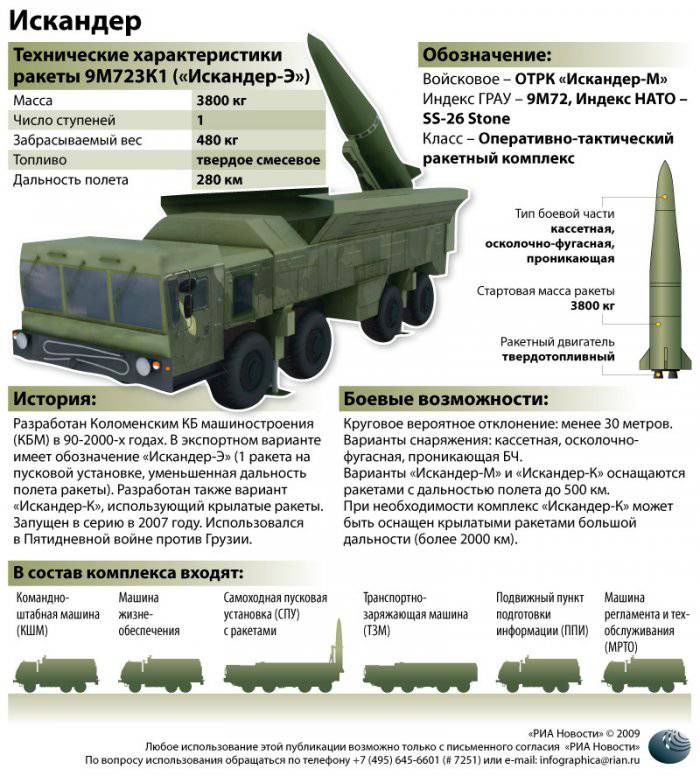The Iskander missile system is a weighty argument for the protection of national interests

In an effort to win the arms market, China began to produce for export its own ballistic missile M-20. But in this situation, the question arises - is it a rocket of its own, and not a copy of our Russian Iskander missile system? The M-20 ballistic missile is a whole missile system, which includes two 3-4-ton missiles, placed on a powerful truck, simultaneously performing the functions of a launcher and a conveyor. In recent years, China has increasingly resorted to such a rather unpleasant task as copying foreign weapons systems with their subsequent export, but under their own brand. At the moment, China has not provided information with a detailed description of the technical characteristics of the missile complex, but if a large number of matches are found between Iskander and M-20, then a lengthy litigation may well begin.
The Iskander missile system was developed in 80's, but the first successful launch was carried out only in 1996. The ballistic missile weighs 3,8 tons, is equipped with a solid-fuel engine and has a range from 280 to 400 kilometers. Rocket charge is 400 kilograms. The rocket may be in storage for no more than ten years. Russia exports several different types of warheads, including cluster, thermobaric and electromagnetic. The only part that is not exported is the nuclear warhead. The missile’s target guidance system is highly accurate; for this, GPS and infrared guidance are used in the final part of the trajectory. The warhead strikes a target with an accuracy of up to 10 meters. For the transportation of missiles used 20-tonne four-axle machine, which is also a launch platform. There is also a special transport-loading machine that transports two additional missiles.
Solid Iskander was created to replace the ballistic missiles of operational and tactical purposes of the Soviet era, the SS-23. Prior to 1991, the SS-23 should have been obligatorily removed from service and destroyed, this was stipulated in the terms of the Treaty on the Elimination of Medium and Small-Range Ballistic Missiles. The agreement was adopted in 1987 year and provided for a ban on the presence in service of missiles with a range from 500 to 5300 kilometers.
For a long time, Russia unsuccessfully tried to find foreign buyers on the Iskander. At first, South Korea, Syria, Kuwait, Singapore, India, Iran, the United Arab Emirates and Malaysia showed some interest in the Iskander missile systems. The export version of the Iskander-E complex has a much shorter range of flight - 280 kilometers, as well as somewhat reduced possibilities of electronic suppression for the main warhead. Despite the manifestation of interest by many countries, only Iran expressed readiness to purchase the complex, but with a high degree of probability we can say that these deliveries will not be made due to the effect of international sanctions prohibiting deliveries to the country weapons offensive type. Today, Iskander has been withdrawn from export offers, and its manufacturers work only for the domestic market. So, the Ministry of Defense of the Russian Federation has already purchased 30 self-propelled launchers, and there is a certainty that this is not the last order.
At first, Russia planned to create five Iskander missile brigades, which should include 60 self-propelled launchers and 150 missiles. Commercial production "Iskander" was established three years ago, and at the moment they are equipped with only three brigades.
In the 2008 year, due to the decision of the United States to deploy its missile defense systems in close proximity to the Russian border, the government decided to deploy Iskander complexes in the Kaliningrad region, and it is possible that this decision made the United States change its decision and sit at the negotiating table on the creation of a joint Russia-US missile defense system.
The main reason why Americans are afraid of "Iskander", lies in particular the rocket. A ballistic missile launched from the Iskander launcher does not rise beyond the upper atmosphere, but flies along a flat trajectory. Thanks to this property, the rocket can evade and drop radar traps. Given these abilities, anti-missile systems are much more difficult to destroy. From all of the above, we can conclude that the Iskander missile system is an excellent argument in solving complex issues related to national security.

Information